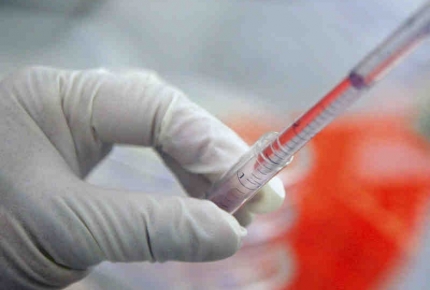Investment in research has led to advances in detection and treatment of cancer that are leading to earlier and more accurate diagnoses and more targeted treatments that often carry less side effects. I’m so pleased that guest blogger Joydeep Goswami from Thermo Fisher Scientific is able to offer greater insight into these advances and the importance of making sure broad populations have access to these exciting new tools.
By Joydeep Goswami
President, Clinical Next Generation Sequencing and Oncology
Thermo Fisher Scientific
Technology Advances
Over the last several decades, scientific research has revealed that cancer is a disease primarily caused by mutations found in genes. Further studies have helped identify which key mutations develop into potentially deadly cancers. That information has helped researchers in the pharmaceutical industry to develop specially tailored therapies designed to target those mutations.
These targeted therapies have revolutionized cancer treatment by providing effective drugs that often have far fewer side effects. However, before a decision can be made on the right course of treatment, a physician must first understand the unique characteristics of the tumor and, how a patient’s own immune system may respond to the tumor.
While older diagnostic techniques are limited in their ability to detect only a small number of specific mutations, the latest technology, known as next-generation sequencing (NGS), is enabling clinicians to have a much broader picture of mutations present in a tumor. This powerful tool has led to the development of new tests that can now provide a more complete understanding of a tumor’s various mutations in one shot.
This modern technique can save valuable time by avoiding the need for multiple tests to screen for different sets of mutations, and eliminates the need for multiple invasive biopsies. NGS may also bypass the trial-and-error process of selecting the right treatment for a patient’s tumor by quickly zeroing in on the tumor’s mutations. Shortening the diagnostic process can improve the patient’s quality of life significantly and even extend it by identifying the appropriate treatment earlier. Targeted sequencing is able to balance the cost and utility by sequencing just the specific mutations that have targeted treatments associated with them, giving doctors the right amount of information to make a therapy decision.
The National Cancer Institute at the National Institutes of Health has recognized the potential impact of targeted NGS on cancer and is using it to help match patients to ongoing drug trials through its NCI-MATCH program at more than 2,400 regional facilities. Researchers s can then use the sequencing results to assign eligible patients to one of 24 treatments.

Advanced sequencing is also being adopted in a number of places around the globe – including at Japan’s National Cancer Center (LC-SCRUM) and in about 500 labs in North America and Western Europe. While this is a good start, the reality is that this is still only a small fraction of the more than 10,000 pathology labs in these regions. Without greater adoption, countless patients will continue to be subject to trial-and-error choices of medication, which decreases their quality of life, while increasing medical spending.
Barriers to Access
There are two main reasons labs have been slow to adopt NGS – awareness and economics. A recent survey by the Journal of Precision Medicine showed that only about a third of patients and caregivers had a good understanding of genomic tools for cancer detection. NGS is a relatively new technology, and most patients and many doctors are not aware of the benefits that this technology can provide to inform treatment choices. Patient advocacy groups, such as the American Cancer Society Cancer Action Network, government agencies such as NIH, healthcare networks and companies can do more to educate patients, doctors and pathologists on the benefits of this technology.
Patients and their friends and family should also take the initiative and ask their doctors whether NGS could help inform more effective treatment options. Doctors and healthcare networks have a responsibility to their patients to provide the most effective innovations so patients get the right care.
The issue of economics, on the other hand, is harder to overcome. NGS-based tests provide a significantly higher value to patients and their oncologists, in terms of information about the tumor and treatment selection, than tests based on older technologies. Considering all the benefits, NGS tests should be reimbursed at a level that ensures patients are not forced to pay high out-of-pocket costs, and so that labs have an economic incentive to offer these tests to patients.
So how can we overcome the economic hurdle? Healthcare networks – insurers, including Medicare and Medicaid – can help tremendously by coordinating NGS-focused trials across multiple labs to exponentially expand patient and health economics data. The information they gather would help establish clinical utility and cost justification, which is what insurers rightfully want to see prior to approving a test for appropriate reimbursement. Ultimately, insurers and healthcare networks have the greatest incentive to adopt NGS-based tests since matching a cancer patient with the right drug at the outset can radically reduce spending on the wrong treatments and unnecessary hospital stays. Such efforts can go a long way to accelerate better and more cost-effective care given to patients.
We are all lucky to live at time when new options to address cancer are continually emerging. New research and technological improvements are leading to new and less-invasive approaches to detect cancer. Additionally, developments in the area of immuno-oncology have the potential to offer longer-lasting treatment options and cures by studying how a patient’s immune system reacts to a tumor. Getting these developments to patients quickly and safely will require the combined efforts of patients, insurers, governments and healthcare communities. But getting it right is critical in making cancer a more treatable and less-lethal disease.


